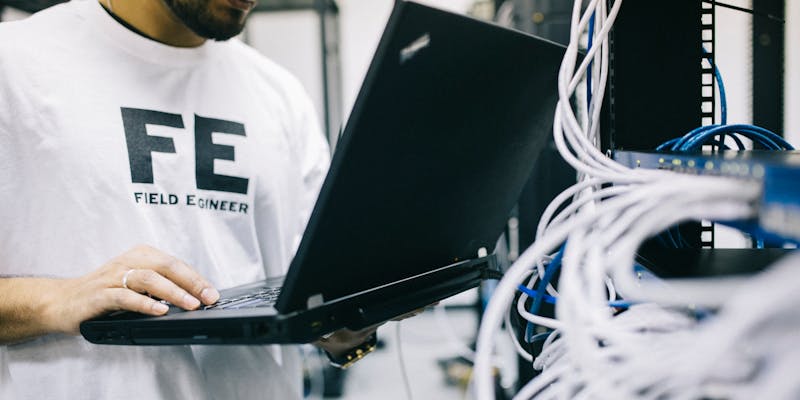Servers are powerful computers tasked with managing network functions and delivering processing capacity to other devices, playing a crucial role in data science by distributing and running parallel computations to enhance efficiency. These servers facilitate scalability, allowing for increases in computing resources to match project demands effortlessly. With centralized management tools, servers enable orderly monitoring and management of data science operations, ensuring workflows remain streamlined. This capacity for expansion and centralized control makes servers an indispensable tool for handling large-scale data science projects, providing a robust infrastructure for complex computing tasks. The server-driven approach to data science not only accelerates analytical processes but also supports the intricate demands of extensive data handling, making it possible to tackle sophisticated computations with improved speed and accuracy.
Server Reliability and Maintenance Challenges
Servers are engineered for high reliability with the capacity to run continuously under heavy workloads. This feature is particularly beneficial for data science endeavors, where uninterrupted and timely data analysis is of the essence. Despite their robustness, servers come with complexity and a notable price tag. Installation and maintenance necessitate technical proficiency, which can be a barrier for individuals or small groups. The initial cost of acquiring a server is significant, not to mention the recurrent expenses tied to upgrades, energy use, and specialized upkeep. These costs can add up, making servers a more substantial investment over time. Despite this, the reliability and performance advantages servers offer cannot be overlooked, especially when consistent data processing and uptime are critical to the success of data-driven projects.
Assessing Gaming PCs for Analytical Work
Analyzing the Price-to-Performance Ratio of Gaming PCs
Gaming PCs offer an impressive balance of cost and capability, powered by advanced CPUs and GPUs essential for heavy-duty tasks like machine learning. Their design caters to demanding gaming graphics, which mirrors the computational intensity of data science, especially in terms of processing speed and memory resources. Consequently, these PCs provide data scientists with an affordable option to personalize their setups as needed. The components within gaming systems are selected to meet the rigorous requirements of the latest games, which often involve complex computations and large data processing—similar to the challenges faced in data science and machine learning. As a result, the gaming PC market has inadvertently tailored machines that are also well-suited for computational scientific work, offering a cost-effective solution for professionals and hobbyists in the field. This dual-purpose nature has made gaming PCs a popular choice for those who require high performance but must adhere to a budget.
The Limits of Gaming PCs in Data Science
Gaming PCs deliver a fair balance between affordability and performance, but they’re not crafted for endless high-intensity tasks. When subjected to long-term, heavy computational work, they might suffer from wear, leading to possible system failures and data risks. These PCs don’t come with the scalability and sophisticated management systems that servers do, making them less ideal for expansive data science projects with huge data volumes and parallel processing needs. While they perform well for everyday gaming and standard computing, gaming PCs can struggle under the weight of enterprise-level workloads and may hinder productivity when pushed beyond their intended use. In scenarios requiring consistent, heavy computing power, the limitations of gaming PCs become apparent, with the lack of server-grade durability and expandability being key drawbacks, especially for professional settings where data processing demands can be immense.
Making the Right Hardware Choice
Balancing Factors for Optimal Hardware Selection
Choosing between a gaming PC or a server for data science comes down to budget and computational needs. While gaming PCs can be more wallet-friendly and are suitable for smaller-scale projects, servers excel in handling large data sets and complex analysis with higher reliability and scalability. Moreover, it’s crucial to contemplate the future trajectory of a data science project. If one anticipates the project’s data demands to expand considerably, the server’s ability to grow with those needs might render it a more prudent investment in the long run, despite a potentially higher initial cost. Ultimately, the decision should align with both current requirements and foresight into the project’s development, balancing immediate expenses against the benefits of robustness and adaptable performance.
Long-Term Planning and Future-Proofing
Choosing the right hardware for data science is key to staying relevant in a swiftly advancing field. Data sizes are ballooning and the complexity of algorithms is increasing, making the longevity of hardware a significant concern. A gaming PC or server bought now should not only meet current needs but also be flexible enough for the inevitable growth in data science demands. Looking forward means considering future workloads and how easily the hardware can be upgraded. It may seem costly at first, but investing in adaptable, upgradable hardware will ultimately be more efficient, avoiding the need for premature replacements as data science progresses. This forward-thinking approach in selecting hardware is a strategic move, ensuring that the tools at one’s disposal remain capable and efficient as the field of data science continues to evolve, thus safeguarding the investment over time.

